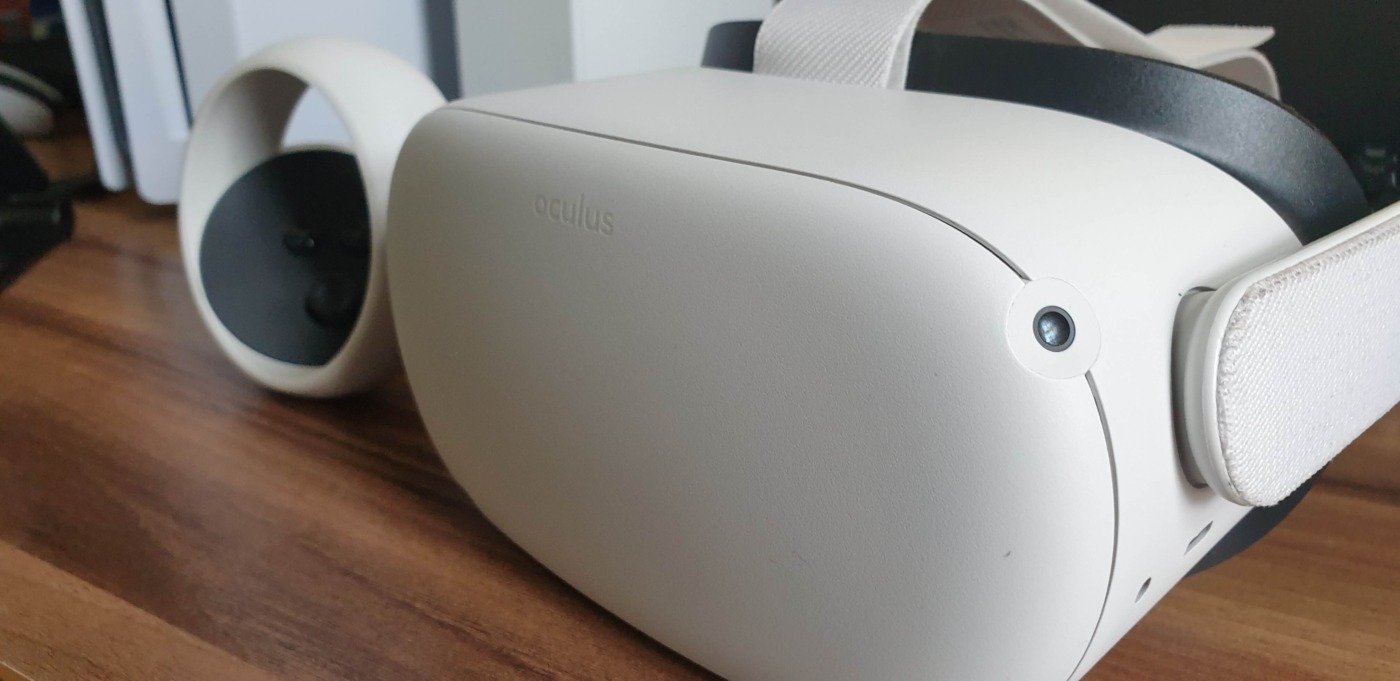Oculus Quest 2 review: debunking the ‘future of gaming’ myth
When the Oculus Rift was first demoed at E3 2012, it was heralded as the VR headset that would bring in the future of gaming. Here we are, over eight years later, and that future looks a long way off. Console and mobile gaming are more popular than ever, while virtual reality has struggled to find its identity.
Oculus has continued to release updated models of its VR headsets, with the latest being the Oculus Quest 2. Will this be the pinnacle moment in gaming that shifts the balance towards VR? Probably not, but it’s a start.
After using the Oculus Quest for a few weeks now, I can confidently say VR is not ‘the future of gaming’. It is the spiritual successor to the Nintendo Wii, and I mean that in a good way. The Wii’s innovative design brought a whole new motion element to gaming that many companies – Microsoft and Sony included – have unsuccessfully tried to build on or replicate. The move into VR is the next step up for this style of gaming.
The immersion that lends itself to virtual reality gameplay is the reason titles like Beat Saber do so well on every VR platform. By owning this motion-focused gameplay, the right developers are gradually beginning to create VR-exclusive games that will further solidify VR as a crucial element of the games industry. And the Oculus Quest 2 is making these games more accessible.
The Oculus Quest 2 is the spiritual successor to the Nintendo Wii, and I mean that in a good way
At a price tag of £300, the Oculus Quest 2 is one of the most affordable entry points into VR gaming. With the PSVR on Sony’s backburner, and both the HTC Vive Cosmos and Valve Index costing £550 and £919 respectively, VR has been an unattainable piece of technology for most consumers, especially those without a high-end PC or PlayStation console.
It’s also accessible in terms of space. No longer are you bound by a bundle of wires and external cameras forcing you into dedicating one space to VR. The Oculus Quest 2 is wireless, needing only a somewhat clear space for you to be able to swing your arms about in. Setting this up requires ‘drawing’ the boundaries of your room via the Oculus headset – made possible by the external camera mode. This boundary might be a problem for students who don’t particularly have the most space in their flats or rooms (I’m looking at you, Old Rootes).
Once you start with the Oculus Quest, it’s easy to see what the VR fuss is about. The Quest controllers merge into your body, responding perfectly to even the slightest of hand movements. The picture quality is amazing, rendering stunning environments in 360 degrees and fully immersing you into the VR experience, albeit with slight motion sickness occasionally.
The headset itself will require charging every three or four hours, which was a slight disappointment. While the Quest’s controllers need AA batteries, this isn’t as frustrating as with the Xbox controller. Since I first bought the Oculus Quest 2, I have played roughly 25-to-30 hours, and the battery level bar has not moved at all. It’s a technological masterpiece.
Where the Quest shines is in the array of experiences you cannot get anywhere outside of VR
Aside from the battery wizardry, Oculus’ audio technology has also gone underappreciated. Using a built-in strip of speakers on the side of the device, the Quest 2 supports 3D audio without the need for any headphones and, crucially, without bleeding too much into your environment. It’s another aspect of the headset designed to create an even more immersive experience, once again reducing the need for any (headphone) wires that may get in the way of gameplay.
Of course, no games device would be complete without a solid library of video games. The Oculus Quest 2 is ultimately limited by its internal processor and 6GB RAM, and could easily be mistaken for a mobile product if the VR components were hidden. This means that the ‘future of gaming’ in VR form will not be possible on the Quest, as it can barely even run Half-Life: Alyx (doing so requires a complex process of cables, high-end PCs, and almost arbitrary system requirements).
Instead, where the Quest shines is in the array of experiences you cannot get anywhere outside of VR. Beat Saber, The Climb, Pistol Whip and Vader Immortal are among the best games that are such amazing, immersive experiences that would not particularly work on a console. VR Chat and Rec Room are the closest we’ve got to Ready Player One, but rather than presenting huge, sprawling multiplayer universes, its people dressing up as anime catgirls or playing paintball. And I’m okay with that.
I could not finish this review without mentioning the main drawback of the Oculus Quest and the Oculus brand in general – its connection to Facebook. Following Facebook’s purchase of Oculus in 2014 (a move that also left a sour taste in the mouth of its Kickstarter backers), the VR headset will require players to sign in with a Facebook account from 2023. New users will also now be forced into using a Facebook account, a move which Ars Technica states will likely be used for targeted advertising across the wider Facebook platform. This may not affect the Quest 2’s functionality, but does leave a black spot on an amazing piece of technology.

Comments